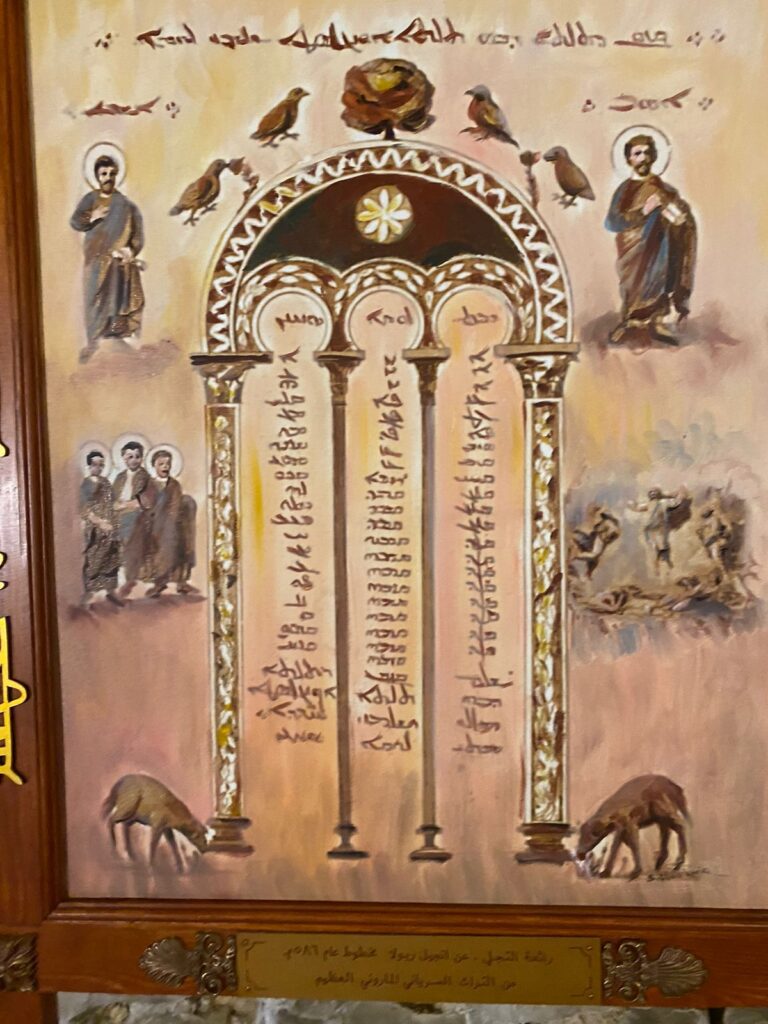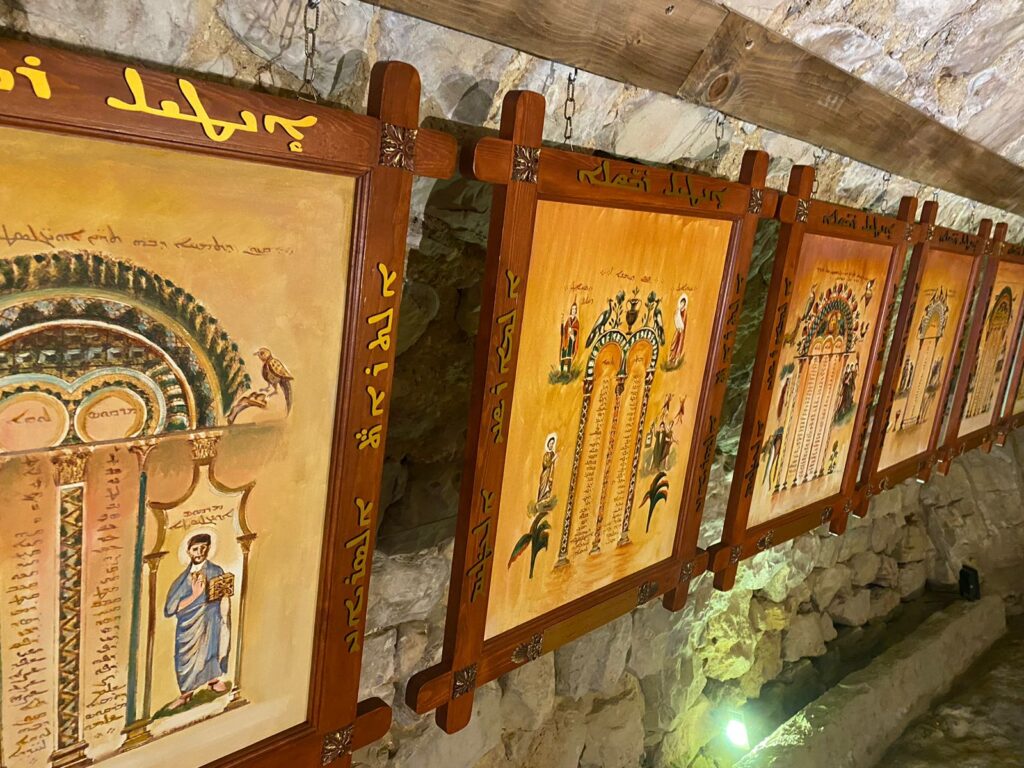The Rabula Gospel
انجيل ربولا
History
انجيل ربولا
مخطوطة تتضمن الاناجيل الاربعة باللغة السريانية نسخها في السنة 586 م الراهب ربولا مع جماعة من رفاقه الرهبان في دير مار يوحنا بيت زغبا في سورية.
تتألف المخطوطة من مائتنين واثنتين وتسعين ورق, حجمها 33سنتم/ 25 سنتم وهي مكتوبة بالخط الاسترنجيلي. ويحتوي على ستة وعشرون لوحة
الثلاثون صفحة الاولى عليها صور رائعة تمثل ابرز الحوادث في حياة المسيح والعهد الجديد والقديم
أهمية هذه المخطوطة انها أقدم مخطوطة في العالم تتضمن صوراً تاريخها مدوّن فيها وواضح ولا يحتمل أي لبس
تعتبر رسمة المصلوب في هذا الإنجيل الأولى من نوعها في العالم، ومنه انطلقت لتُرفع فوق المذبح الكنسيّ، شرقاً وغرباً، ولتزيّن البيوت والمؤسسات المسيحية أينما كان في العالم
انتقل هذا الانجيل من دير مار يوحنا في بيت زغبا، الى كنيسة مار جرجس في انطاكية ولم يعرف كيف وصل الى حوزة البطاركة الموارنة في ايليج في القرن الثاني عشر الذين دوّنوا على صفحاته حواشي لأحداث وقعت في ايامهم.
نقله البطاركة معهم من دير سيدة ايليج الى دير سيدة قنوبين في العام 1440 مع البطريرك يوحنا الجاجي
من قنوبين انتقل الى اوروبا في السنة 1652اصبح بحوزة أسرة coislin ومنها الى مكتبة باريس الوطنية ومنذ النصف الاول من القرن الثامن عشر هو في المكتبة اللورنسية ( lauretienne) بمدينة فلورنسا، وهناك اكتشفه المطران اسطفان عواد السمعاني وأبرز كنوزه للعالم
وإحياء للتراث السرياني الماروني وبمناسبة مرور 1600 سنةعلى وفاة القديس مارون بادر الدكتور فؤاد الشمالي الى إعادة رسم لوحات انجيل ربولا وإستمر العمل حوالي سنتين.
The Rabula Gospel is a manuscript containing the four Gospels in Syriac, copied in the year 586 AD by the monk Rabula and a group of his fellow monks in the Monastery of Saint John of Zaghba in Syria.
The manuscript consists of two hundred and ninety-two pages, measuring 33 cm by 25 cm, written in the Syriac Estrangelo Variant script. It contains twenty-six illustrations, with the first thirty pages adorned with beautiful images representing key events in the life of Christ and the Old and New Testaments.
The significance of this manuscript lies in its being the oldest manuscript in the world to contain illustrated images with its history clearly recorded and without any ambiguity. The depiction of the crucifixion in this Gospel is the earliest of its kind in the world, from which it spread to be displayed above church altars, both in the East and the West, and to adorn Christian homes and institutions wherever they may be in the world.
This Gospel was transferred from the Monastery of Saint John in Zaghba to the Church of Saint George in Antioch, and it is not known how it reached the possession of the Maronite Patriarchs’ treasury in Ilige in the twelfth century, who annotated events that occurred in their time on its pages.
The Patriarchs carried it with them from the Monastery of Our Lady in Ilige to the Monastery of Our Lady of Qannoubine in the year 1440, along with Patriarch Yuhanna Al-Jaji.
From Qannoubine, it traveled to Europe in the year 1652 and came into the possession of the Coislin family, and from there to the National Library of Paris. Since the first half of the eighteenth century, it has been in the Laurentian Library in Florence, where it was discovered by Archbishop Estefan Awad al-Semaani, who showcased its treasures to the world.
In an effort to revive the Syriac Maronite heritage and to commemorate the 1600th anniversary of the death of Saint Maron, Dr. Fouad Al-Shamali undertook the task of re-drawing the illustrations of the Rabula Gospel, and the work continued for about two years.





